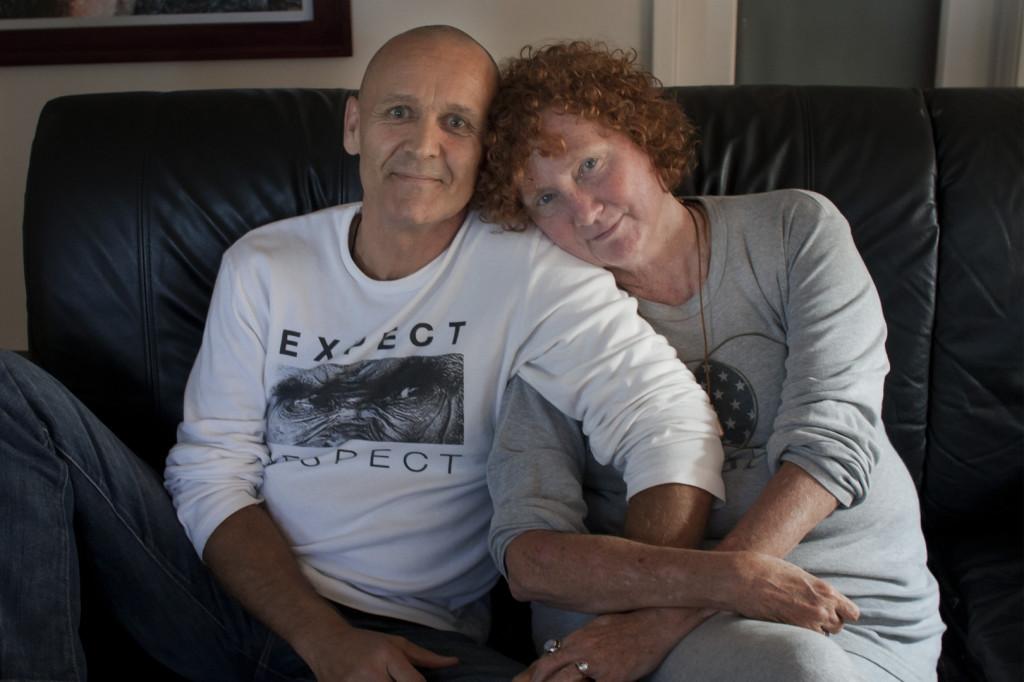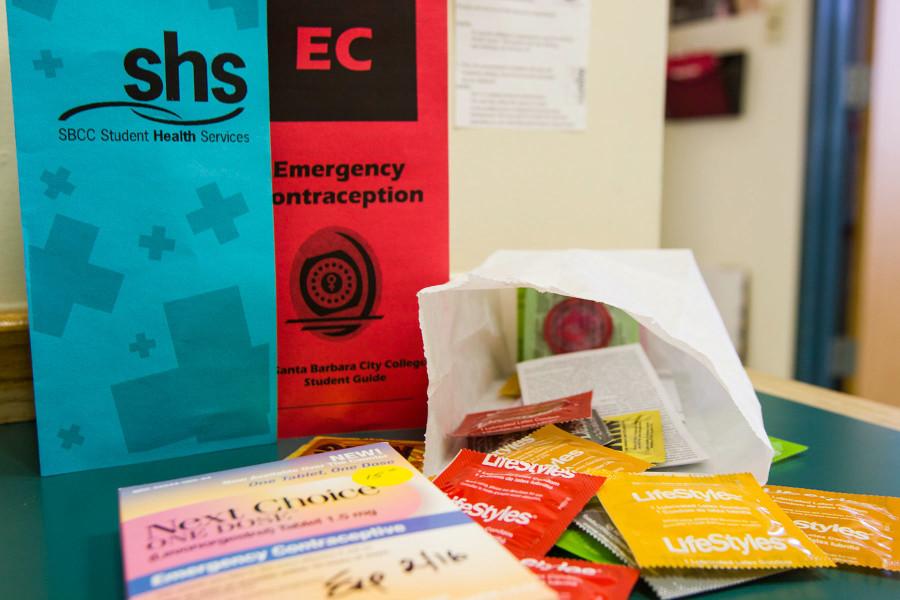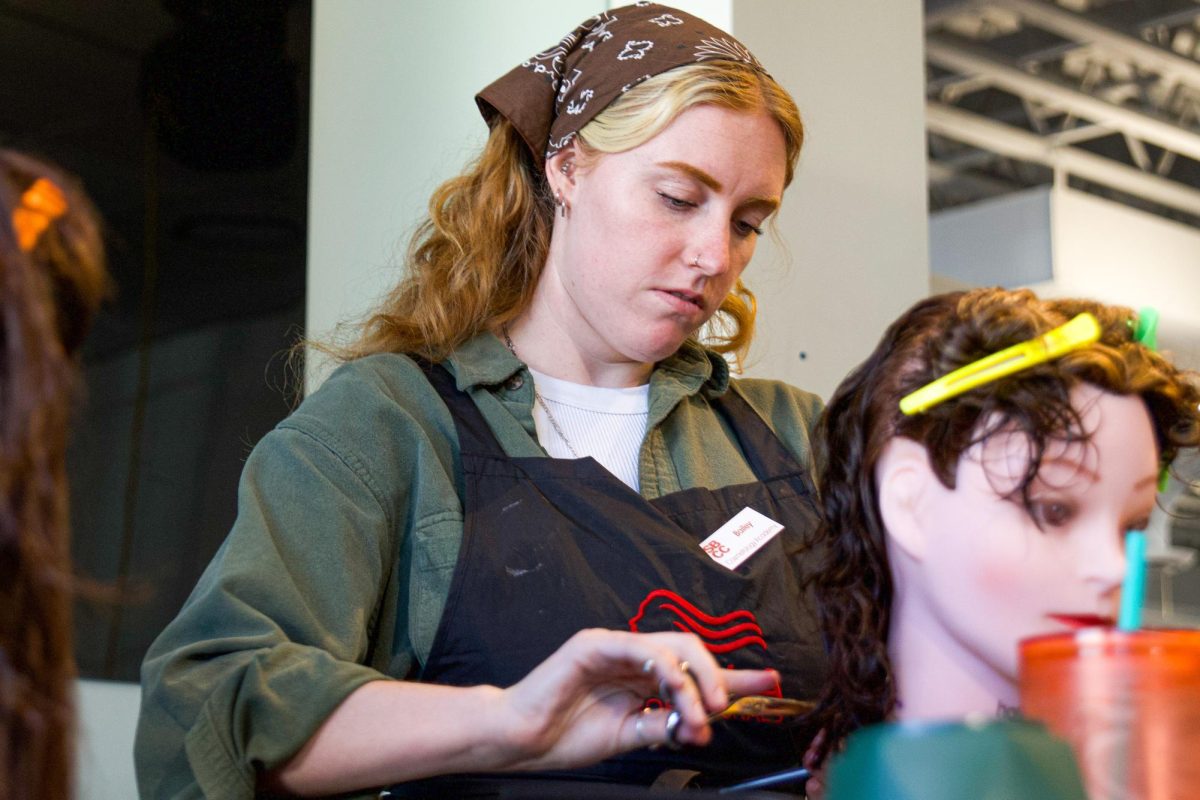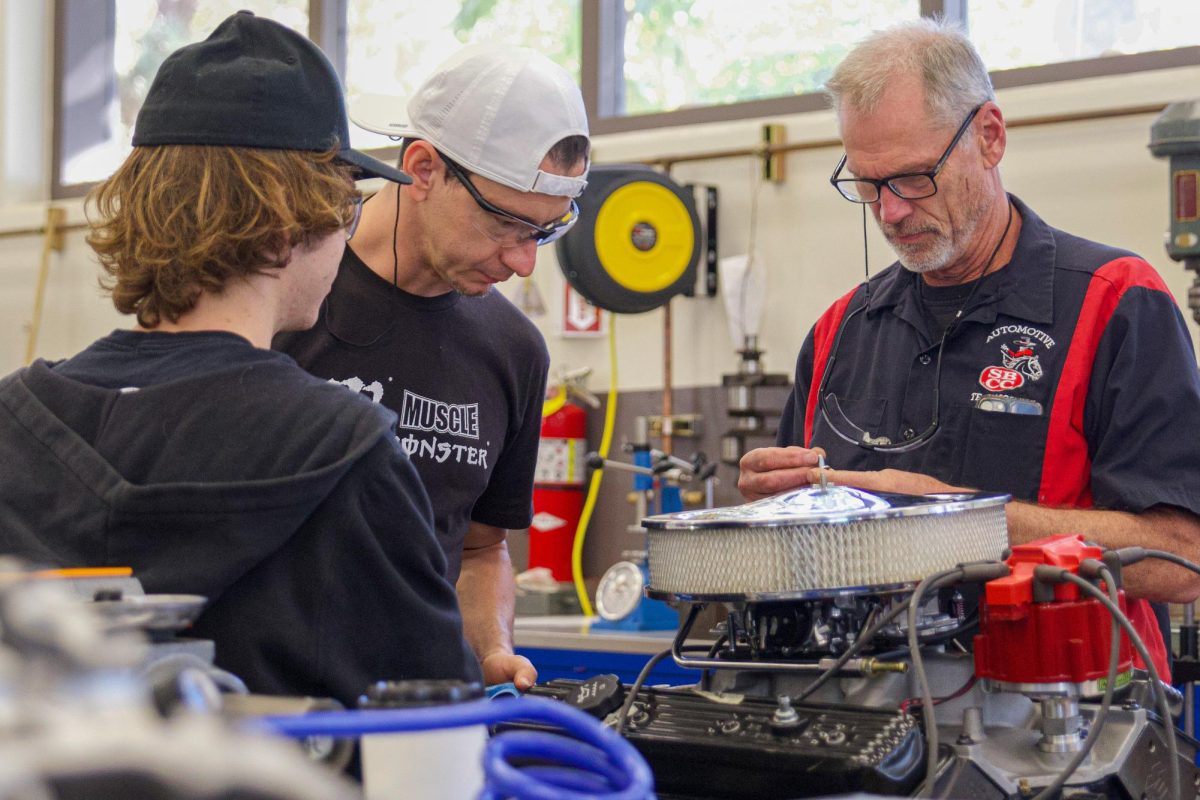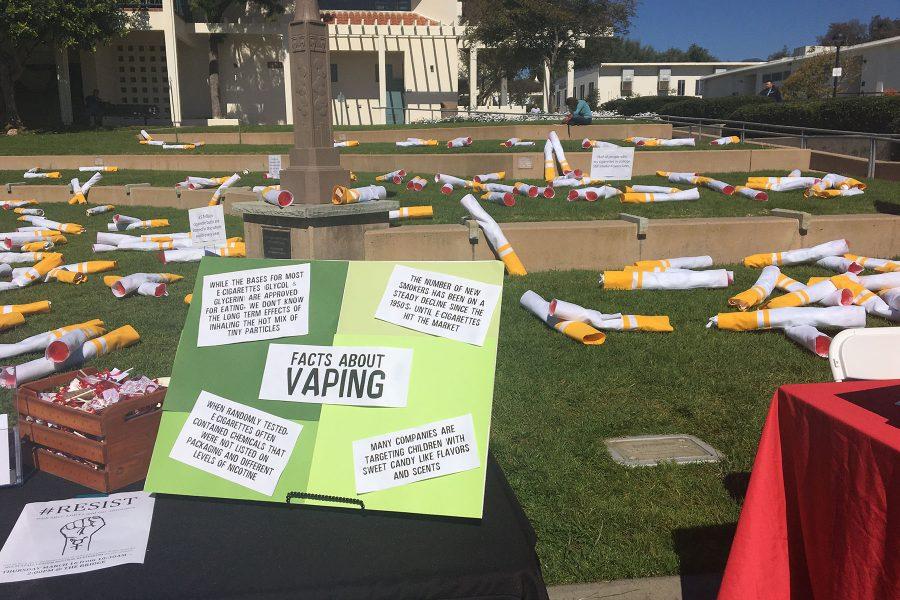The “Ark of the Covenant” is a 400-pound diamond-shaped sculpture that sits inside an average-sized house and emits an almost indistinguishable hum, which is felt rather than heard.
Inside the Ark lies a Tesla coil, one of Nikola Tesla’s inventions, which produces a low current of high-voltage and high frequency electricity.
This is one of many statues that student Kathryn Lubahn believes aids her continuing battle with multiple sclerosis and helps realign the global harmonics of our planet.
Lubahn began taking City College classes in 1999, the same year she lost her home. Battling two chronic illnesses, She climbed from the trenches of homelessness into a comfortable life. Now, 60 years old, she is composing a memoir and a guide for not only surviving the streets but also creating meaning.
“Nobody helps you, you’re just not human to them,” Lubahn said.
In 1990, Lubahn lived on an avocado farm in Santa Barbara with her “companion in destiny,” Anthony Benedict-Smith. A five-year drought ailed California and that year North American Free Trade Agreement brought in fruit from Chile priced at ten cents a pound, driving them out of business. Soon after, Lubahn fell horribly ill.
She was diagnosed with multiple sclerosis and retinitis pigmentosa, a degenerative eye disease that damages the retina. Because of financial troubles, Lubahn was forced to chose between treatment and a home. She chose health.
“I think this is what puts so many out on the streets every year,” said Benedict-Smith. “We couldn’t afford to pay for the medicine for Kathryn and our rent. If we continued to pay our rent, Kathryn would die.”
When Lubahn and her partner first took to the streets, they were most taken aback by the startlingly cold nights pushed in from the ocean. The only way to survive without contracting pneumonia was to find shelter.
In the fashion of Mary and Joseph, Kathryn and Anthony went knocking on the doors of various local homeless shelters, only to be turned away because their insurance could not cover Lubahn’s lack of vision.
“I remember that day very clearly; I told my first, very intentional lie. I said, ‘I see well enough to get around,’ which I didn’t, but they wouldn’t let me stay at the Rescue Mission if I told the truth,” said Lubahn.
While living at the Rescue Mission, Lubahn witnessed a fellow disabled homeless man named Peter get bludgeoned to death with a tire iron while sleeping on the bench outside. He wasn’t allowed in because of the homeless shelters’ policies that only allow one to stay a maximum of ten days per month.
“You get ten days a month because it’s supposed to encourage you, but Peter was never going to get another job because he could hardly walk. It’s designed for people to die,” Lubahn said.
Lubahn and Benedict-Smith watched another friend, Dorthia, die from a vicious case of pneumonia left untreated and misdiagnosed as a common cold.
“I survived. We survived. They say if you don’t make it back off the streets in six months it’s not likely you will make it back at all,” Lubahn said.
Lubahn does not think she would have survived if not for the training she received from a Cherokee mentor when she was still a wealthy young woman.
“I had a great spiritual teacher that taught me to adapt, to survive before I knew I would need it,” Lubahn said.
She is currently working on a memoir of life on the streets as well as a guide for surviving homeless. She plans to release the guide for free online so it can be accessed in public libraries, which, she explained, are often the only available sources of information, communication and creativity for the homeless.
Lubahn’s appearance is delicate. Her eyes dart around, intellectual, but unseeing, and she has to be escorted almost at all times.
“I was really close to death last spring, and we took all the money we could get a hold of for hyperbaric chamber treatments. I needed forty, but we could only afford three at the time. They saved my life,” Lubahn said.
Her hair, still a fiery red, perhaps tracing back to her Celtic ancestry, is the only accurate physical representation of her spirit. Lubahn is a captivating speaker. For two years now she has placed second in City College’s Emmons poetry contest.
An excerpt from her memoir’s haunting preface reads, “This is a book filled with people who only have first names. They are people I lived with, some died. Most are lost to me.”


